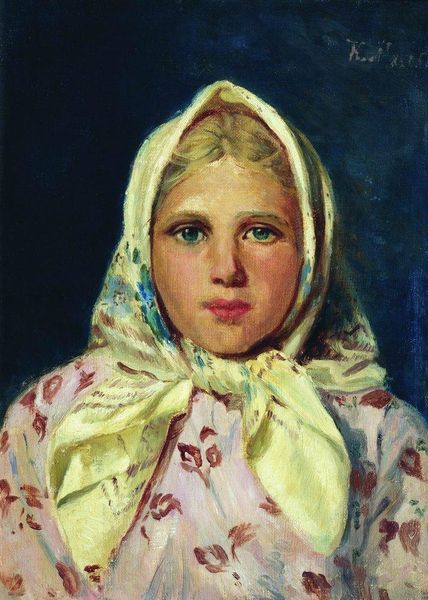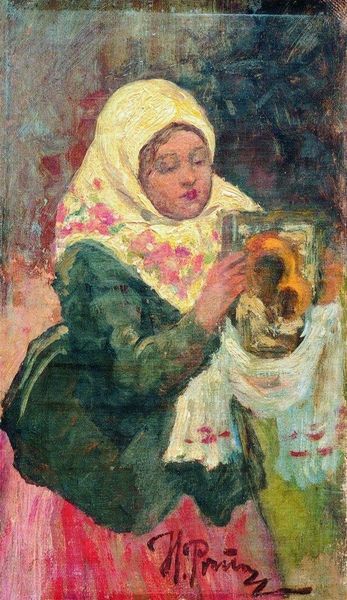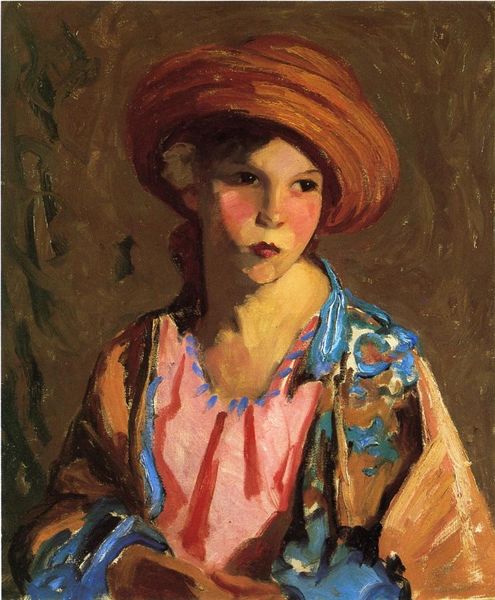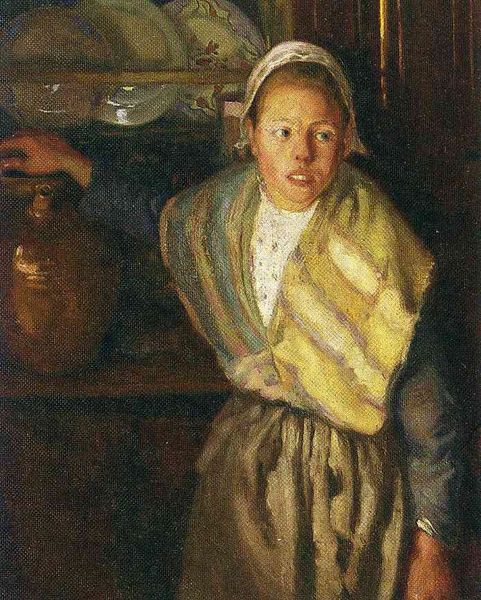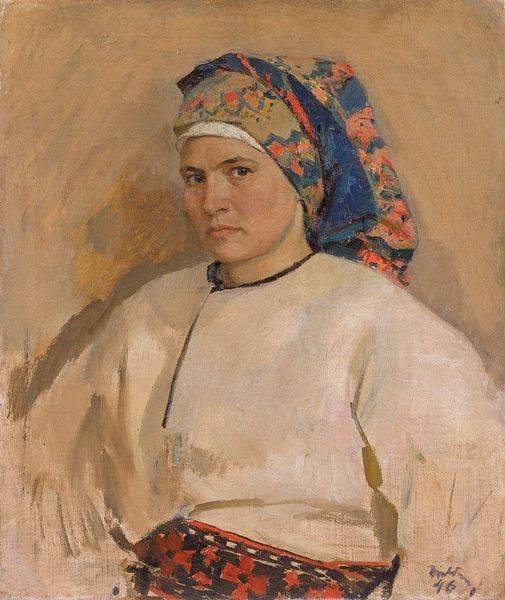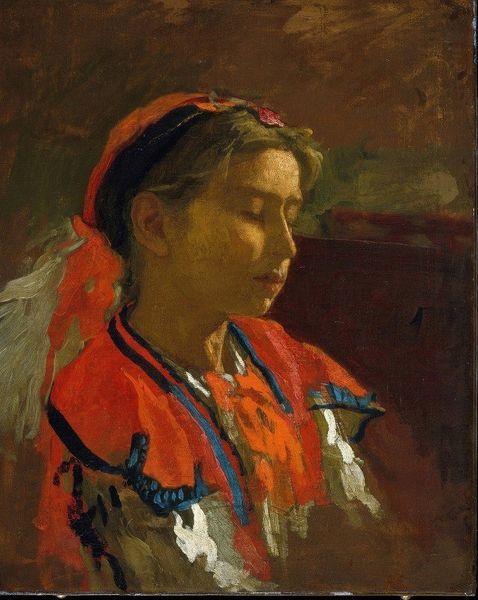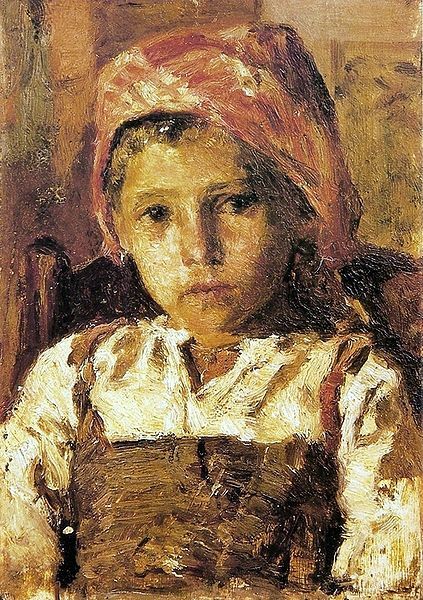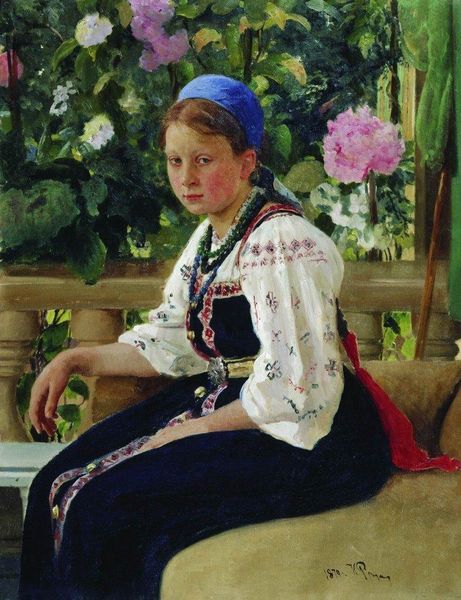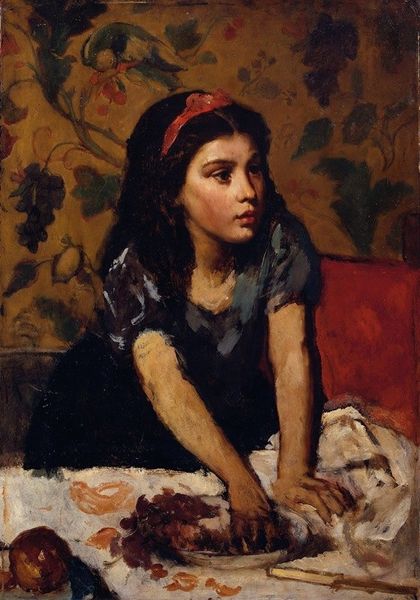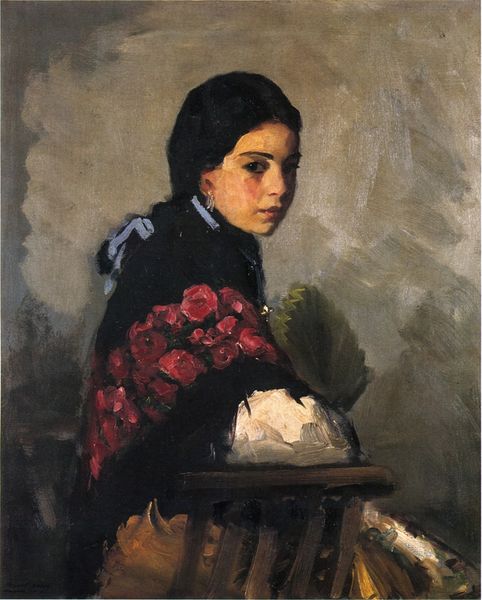
Copyright: Public domain
Editor: Here we have Nikolay Bogdanov-Belsky’s "Portrait of a Girl," painted around 1910, using oil on canvas. The floral patterns of the dress immediately strike me, yet there's something wistful in the girl’s expression. How do you interpret this piece, especially in terms of its symbolism? Curator: The headscarf she’s wearing, known as a платok, transcends mere fashion. Notice how the artist used it in a vivid yellow to draw our eyes towards the girl’s gaze; it symbolizes Russian identity, rural life, and even a rite of passage for young women. Is she daydreaming, or thinking about things bigger than herself? Editor: I hadn't considered that. The juxtaposition of the vibrant headscarf and dress against the somber background… Is that significant? Curator: Absolutely. It’s about tensions and cultural memory. The floral patterns speak of hope and connection to the land, contrasting with a hint of melancholic realism; Bogdanov-Belsky's focus seems to rest on childhood as a poignant stage of life and, specifically, Russian childhood, doesn't it? Are there other Russian artists whose handling of such a subject strikes you in a similar manner? Editor: Perhaps something from the Peredvizhniki movement, focusing on everyday peasant life… Thanks, considering the cultural symbols adds a completely new layer of depth to this work! Curator: Indeed, and noticing how such items have functioned as cultural markers is essential when delving into portraits beyond just capturing a likeness!
Comments
No comments
Be the first to comment and join the conversation on the ultimate creative platform.
